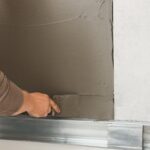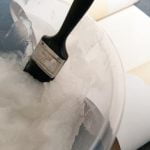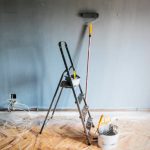Is painting your rental home a capital improvement? Understanding the concept of capital improvements in rental properties is essential for landlords and property owners. When it comes to maintaining and improving your rental property, it’s important to know what constitutes a capital improvement and how it can impact the value of your investment.
The impact of painting on the value of your rental property is significant. A fresh coat of paint can not only enhance the aesthetic appeal of your rental unit but also contribute to its overall value. However, determining whether painting is considered a capital improvement requires careful consideration and understanding of various factors.
Before you decide to embark on a painting project for your rental property, it’s crucial to know how to determine if painting qualifies as a capital improvement. Additionally, exploring alternatives to painting and considering the tax implications are essential steps in making informed decisions about enhancing your rental property.
As you weigh the options between DIY painting and hiring professional painters for your rental property, understanding the cost-benefit analysis is crucial. Best practices for successful painting projects in rental properties can help you maximize the benefits of this capital improvement while minimizing potential risks and drawbacks.
The Impact of Painting on the Value of Your Rental Property
Painting has a significant impact on the value of your rental property. It not only enhances the aesthetic appeal but also contributes to the overall condition of the property. Here are some ways in which painting can add value to your rental property:
- Improves curb appeal: A fresh coat of paint on the exterior of the rental property can greatly improve its curb appeal, making it more attractive to potential tenants or buyers.
- Enhances interior ambiance: Painting the interior walls and ceilings can make the space look brighter, cleaner, and more inviting, creating a positive first impression for prospective tenants.
- Protects and maintains: Regular painting helps protect surfaces from wear and tear, moisture, and other environmental factors, thereby preserving the structure and maintaining its value over time.
Determining if painting is a capital improvement for your rental property depends on various factors such as the extent of the painting project, its impact on the property’s value, and its longevity. Generally, if the painting project goes beyond routine maintenance and significantly enhances the property’s value or extends its useful life, it may be considered a capital improvement.
While painting is a common way to enhance a rental property’s value, there are alternative capital improvements that can achieve similar results. For example, upgrading fixtures and appliances, landscaping improvements, or remodeling kitchens and bathrooms can also add significant value to a rental property.
Overall, investing in professional painting as a capital improvement for your rental property requires careful consideration of costs against potential benefits. Conducting a cost-benefit analysis can help you determine whether a painting project will yield positive returns in terms of increased rent or property value. Additionally, implementing best practices for successful painting projects in rental properties is essential to ensure quality results that contribute to long-term value enhancement.
How to Determine if Painting Is a Capital Improvement
When determining whether painting your rental property is a capital improvement, there are a few key factors to consider. One important factor is the lasting impact of the painting. A fresh coat of paint can certainly improve the overall look and feel of the property, potentially increasing its value. However, if the paint job is simply cosmetic and does not add any significant value or extend the life of the property, it may not be considered a capital improvement.
Another factor to consider is the cost of the painting project. Generally, if the cost of the painting project is substantial and adds long-term value to the property, it may be considered a capital improvement. On the other hand, if the cost is minimal and only provides short-term benefits, it may not meet the criteria for a capital improvement.
It is also important to consult with tax professionals or accountants to determine how painting your rental property will impact your taxes. The tax laws surrounding capital improvements can be complex, and seeking professional advice can ensure that you are in compliance with regulations while maximizing your tax benefits.
| Factor to Consider | Impact |
|---|---|
| Lasting Impact of Painting | A fresh coat of paint can improve value and appearance |
| Cost of Painting Project | If substantial, it may add long-term value to property |
| Tax Implications | Consultation with tax professionals for compliance and benefits |
Alternatives to Painting as a Capital Improvement
When it comes to improving the value of your rental property, there are alternatives to painting that can also be considered as capital improvements. One such alternative is making upgrades to the property’s kitchen and bathroom. These upgrades could include installing new countertops, cabinets, fixtures, and appliances. By modernizing these areas, you can significantly increase the appeal and value of your rental property.
Another alternative to painting as a capital improvement is making energy-efficient upgrades to the property. This could involve installing solar panels, replacing old windows with energy-efficient ones, or upgrading the HVAC system. Not only do these upgrades make the property more attractive to potential tenants, but they also have the added benefit of reducing utility costs, which can be attractive to environmentally conscious renters.
In addition to kitchen and bathroom upgrades and energy-efficient improvements, landscaping can also be considered a capital improvement for your rental property. Well-maintained outdoor spaces can enhance the aesthetic appeal of your property and attract more tenants willing to pay higher rents. Landscaping improvements could include adding irrigation systems, planting trees and flowers, or creating outdoor living spaces.
| Capital Improvement Alternative | Impact on Rental Property |
|---|---|
| Kitchen and Bathroom Upgrades | Increases value and tenant appeal |
| Energy-Efficient Upgrades | Reduces utility costs; attracts environmentally conscious renters |
| Landscaping Improvements | Enhances aesthetic appeal; attracts higher-paying tenants |
Tax Implications of Painting as a Capital Improvement
When it comes to rental properties, the tax implications of making improvements, such as painting, can have a significant impact on your finances. Understanding how painting can be considered a capital improvement and its tax implications is crucial for landlords and property owners.
Here are some key points to consider regarding the tax implications of painting as a capital improvement:
- Depreciation: When painting is considered a capital improvement, you may be able to depreciate the cost of the paint and labor over time. This means that you can deduct a portion of the cost each year over the useful life of the improvement.
- Tax deductions: If painting is classified as a capital improvement, you may be eligible for tax deductions related to the project. This includes deductions for materials, labor, and other associated costs.
- Capital gains tax: If you decide to sell your rental property in the future, any capital improvements like painting that increase the property’s value could affect your capital gains tax liability.
Understanding these implications can help you make informed decisions about whether to classify painting as a capital improvement for your rental property. Consulting with a tax professional or accountant can provide further guidance on how best to navigate these tax considerations.
DIY vs Professional Painting for Rental Properties
Painting your rental property can greatly impact its appearance and value, but the decision to handle the painting yourself or hire a professional is an important one to consider. Each option has its own set of pros and cons that landlords should weigh before making a decision.
DIY Painting
Taking on the task of painting your rental property yourself can potentially save money on labor costs. It also allows you to have full control over the color choices and the timeline for completion. However, DIY painting requires a significant time commitment and skill in order to achieve a professional-looking result. Landlords should also take into consideration the cost of materials, tools, and potential mistakes that may need to be corrected.
Professional Painting
Hiring a professional painting contractor can ensure high-quality results with minimal effort required from the landlord. Professional painters have experience, expertise, and access to high-quality materials that can enhance the overall appeal of the rental property. Additionally, relying on professionals may lead to faster completion times and fewer disruptions for tenants. However, it is important to factor in the cost of hiring professionals when considering this option.
Both DIY and professional painting options have their advantages and drawbacks, so it is crucial for landlords to evaluate their own capabilities, budget, and timeframe when making this decision for their rental properties.
The Cost-Benefit Analysis of Painting as a Capital Improvement
Painting a rental property can be a significant expense, so it’s important for landlords to carefully consider the cost-benefit analysis of painting as a capital improvement. This involves evaluating the upfront cost of the painting project against the potential long-term benefits and added value to the property.
Upfront Costs
Before considering the benefits, landlords must first consider the upfront costs associated with painting their rental property. This includes the cost of materials such as paint, brushes, and other supplies, as well as any labor costs if hiring professional painters. Landlords should also account for any potential downtime or loss of rental income during the painting process.
Potential Benefits
The potential benefits of painting a rental property are numerous. A fresh coat of paint can enhance the appearance of the property, making it more attractive to potential tenants. It can also contribute to improved tenant satisfaction and retention. Additionally, a well-maintained and freshly painted property may command higher rental rates, increasing the landlord’s potential for higher rental income.
Long-Term Value
When weighing the cost-benefit analysis of painting as a capital improvement, landlords should consider the long-term value that a fresh coat of paint can add to their rental property. Not only does it improve curb appeal and attract quality tenants, but it also protects surfaces from wear and tear, potentially reducing maintenance costs in the future. In some cases, a professionally painted property may even increase its overall market value if and when it comes time to sell.
Best Practices for Successful Painting Projects in Rental Properties
In conclusion, understanding the concept of capital improvements in rental properties is crucial for landlords and property owners. While painting can enhance the value and appeal of a rental property, it is important to determine whether it qualifies as a capital improvement. Factors such as the impact on the property’s value, tax implications, cost-benefit analysis, and professional versus DIY painting should be carefully considered before making a decision.
When deciding whether painting qualifies as a capital improvement, landlords should consider alternatives such as renovations or structural repairs that may have a more significant impact on the property’s overall value. Additionally, consulting with a tax professional can provide valuable insights into the potential tax implications of categorizing painting as a capital improvement.
Moreover, implementing best practices for successful painting projects in rental properties can ensure that the investment yields long-term benefits. This includes proper preparation, choosing the right type of paint for durability, addressing any underlying issues such as moisture or mold, and hiring qualified professionals when necessary. By following these best practices, landlords can effectively enhance their rental properties while making informed decisions about capital improvements.
Frequently Asked Questions
What Does the IRS Consider Capital Improvements?
The IRS considers capital improvements to be any substantial changes or upgrades made to a property that increase its value or extend its useful life. This can include renovations, additions, and significant repairs that enhance the property in a lasting way.
Can You Claim Paint on Your Taxes?
Whether or not you can claim paint on your taxes depends on the nature of the paint job. If the painting is part of a larger capital improvement project, then it may qualify for tax deductions as a capital expense. However, if the painting is considered routine maintenance or cosmetic in nature, it typically wouldn’t qualify for tax deductions.
Is Replacing Carpet a Capital Improvement?
In general, replacing carpet can be considered a capital improvement if it is part of a larger renovation project that substantially enhances the property’s value or extends its useful life. However, if the carpet replacement is simply for routine maintenance or cosmetic reasons, it would likely not qualify as a capital improvement for tax purposes.

I’m thrilled to have you here as a part of the Remodeling Top community. This is where my journey as an architect and remodeling enthusiast intersects with your passion for transforming houses into dream homes.





